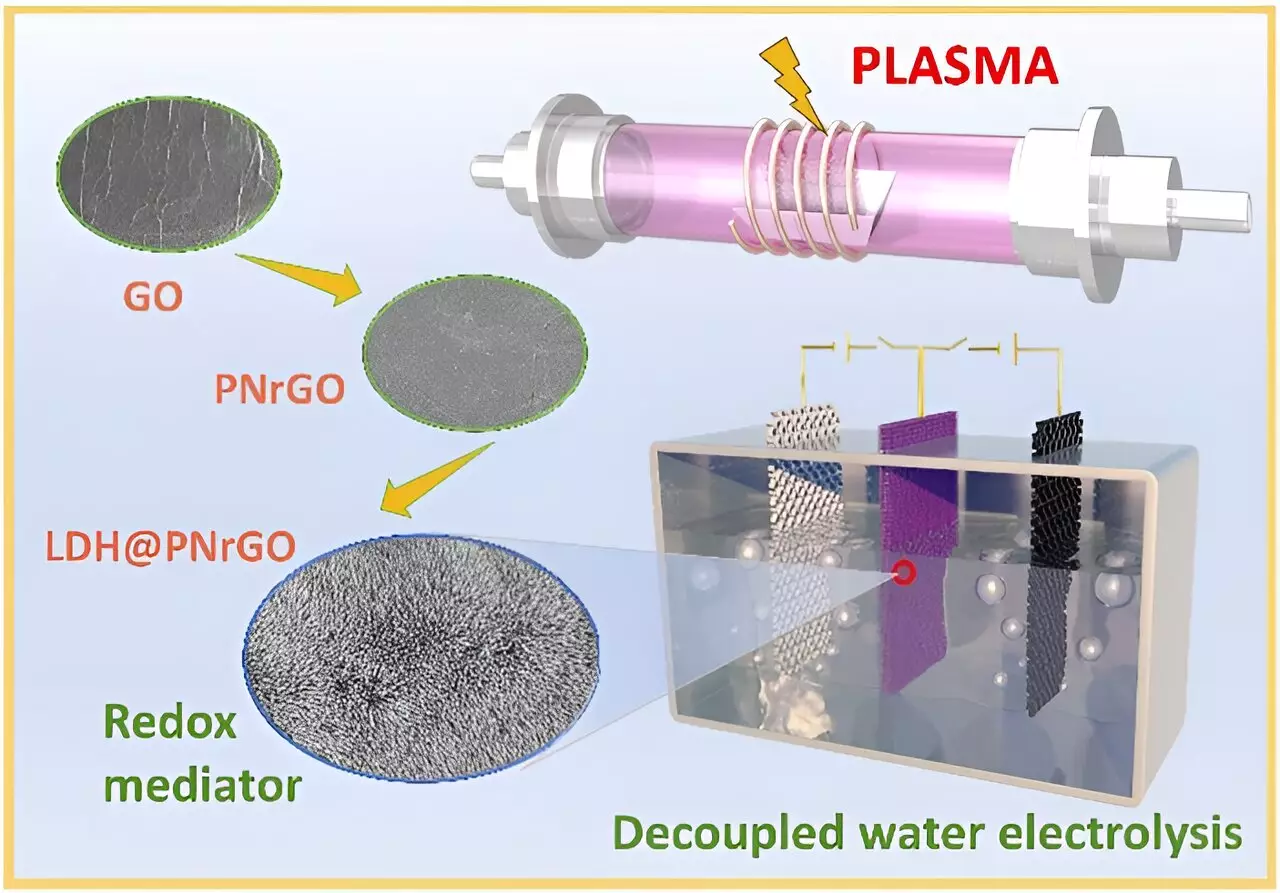As the world pivots towards sustainable energy solutions, hydrogen stands out as a clean fuel alternative. However, traditional methods for electrolysis in hydrogen production, particularly alkaline electrolyzers, face significant challenges. The inherent mismatch with fluctuating renewable energy sources and the issues of hydrogen and oxygen mixing at high pressures render them less efficient for widespread application. The quest for a more effective solution has led researchers to explore innovative approaches that overcome these barriers, particularly in the realm of two-step water electrolysis.
Pioneering Innovations in Electrode Materials
Recent advancements spearheaded by Prof. Chen Changlun’s research team at the Hefei Institutes of Physical Science present a transformative stride in this domain. By focusing on cobalt-doped nickel hydroxide bipolar electrodes, the team has significantly enhanced the efficiency and stability of two-step water electrolysis. The genius of this development lies in its ability to completely separate the production of hydrogen and oxygen temporally and spatially, thereby negating the need for expensive membrane separators that often complicate and inflate costs in traditional setups.
Utilizing a one-step electrodeposition method, the team successfully fabricated flexible electrodes directly on carbon cloth substrates. Cobalt doping emerged as a game-changer, improving not just electric conductivity, but also enhancing electronic storage capabilities and mitigating drawbacks such as unwanted oxygen production. The results speak volumes: the re-engineered electrodes unlock new levels of performance that challenge long-standing limitations of nickel-based electrodes.
Innovative Non-Noble Metal Catalysts
Moreover, the research team did not stop at just improving bipolar electrodes. They recognized the importance of catalysts in the electrolysis process and ventured into developing non-noble metal catalysts, such as molybdenum-doped nickel-cobalt phosphide. This breakthrough further underscores the efficiency of the system by maintaining high durability and catalytic activity. These advancements suggest a promising departure from relying on expensive noble metals, which have long been the go-to for catalysis in electrochemical processes.
To truly capitalize on these innovations, the team implemented current-switching mechanisms that allow for distinct production phases for hydrogen and oxygen. This clever design minimizes cell voltages and boosts energy conversion efficiencies, marking a significant leap forward in reducing operational costs associated with hydrogen generation.
Addressing Limitations with Plasma Technology
A particularly striking achievement of the team is the application of non-thermal plasma technology to improve layered double hydroxide (LDH) electrodes. Traditional LDH electrodes have been plagued by issues of limited capacity and poor conductivity. However, by employing nitrogen-doped variations of LDH and integrating reduced graphene oxide, they have developed electrodes that not only exhibit improved stability but also significantly enhance charge storage capabilities.
The implications of these advancements extend beyond mere technical enhancements; they suggest a genuine pathway towards efficient hydrogen storage solutions tailored for modern infrastructure needs. As industries increasingly demand resilient and adaptable methods for energy storage—particularly in contexts like 5G base stations and massive data centers—these innovations position the research outcomes as pivotal in scaling hydrogen production for future applications.
The insights brought forth by Prof. Chen Changlun and his team reflect a meld of cutting-edge materials science and practical engineering, relentlessly pushing to synchronize local performance metrics with international standards. In an era that increasingly values sustainability, their research illuminates the promising potential of two-step water electrolysis in spearheading the hydrogen economy.


Leave a Reply